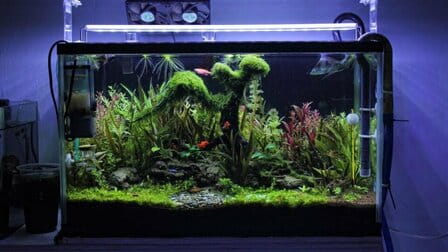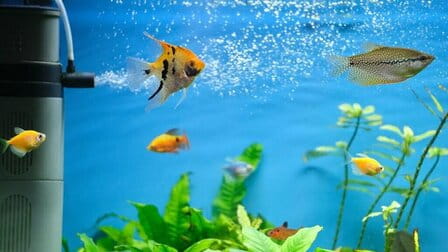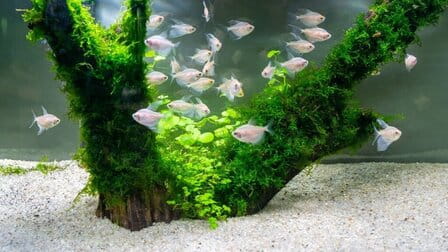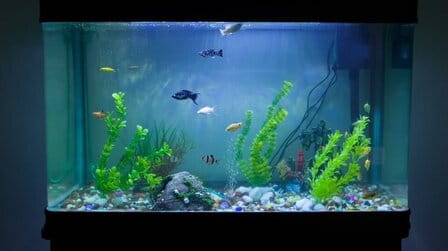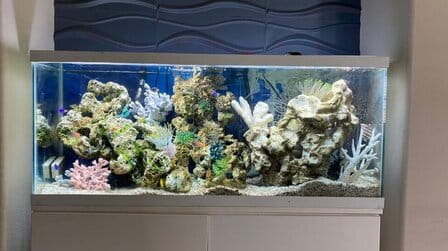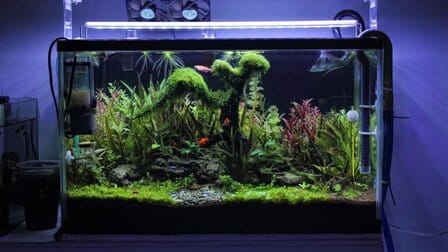The aquarium is the main habitat for your pet fish, they are cold-blooded creatures that rely on the temperature of the water to maintain their body temperature. This requires you to provide heat to the aquarium and maintain it at the right temperature for the fish. In the market, you can choose from several different types of heaters and use one or more heaters, depending on how it is set up. Heater capacity, or heating capacity, is expressed by heater power rating. How to choose an aquarium heater.
1. Types of aquarium heaters
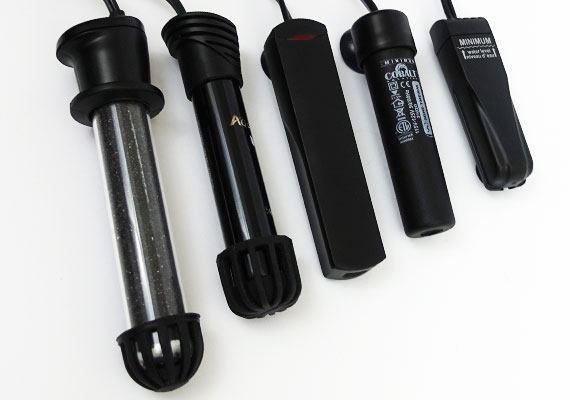
Tank Mount: A type that is attached to the rear of the tank (typically) with suction cups and/or a hook or other fastening device on the edge of the tank. They are only partially submerged and tend to be less efficient than other heaters, plus they can provide enough heat in smaller tanks. When used in large tanks, it is best to have more than one heater hanging on the opposite side of the aquarium.
Submersible: A machine that is completely submerged in the tank water and installed on the back of the tank horizontally or vertically. In general, they are mounted horizontally near the substrate. Submersible heaters generally provide more stable and efficient heating than suspended heaters, especially with larger storage tanks.
Heating cable: The machine is placed under the gravel or substrate and connected to the controller. It can be useful for planting freshwater aquariums to eliminate dead spots.
But you still have to dig up the substrate if the cable needs to be repaired or replaced, nor is it the best choice for saltwater reef systems.
2. Using an aquarium heater
An aquarium heater is a device for heating the water in an aquarium. Heaters are used to maintain a constant temperature in the aquarium or to raise the temperature of the water. Usually fish use water to regulate their body temperature. With some aquarium fish being tropical, they need constant warm water. As temperatures are colder than in their current surroundings, keeping the water temperature warm will help keep the fish healthy and stress-free.
3. Fireplace Dimensions

Sizing the tank heater (or heater) is based on the volume of the tank water, the average temperature in the room where it is located, and the desired water temperature.
As for the wattage of the heater, the rule of thumb is to use between 2.5 and 5 watts per gallon of the actual volume of water in the aquarium. It usually requires more wattage, depending on how much you want to raise the temperature. If multiple heaters are being used, the total heating capacity of all appliances together adds up to the required power.
Adjust the room temperature, minus the average room temperature from the target aquarium water temperature. The result is the amount of heat required, measured in degrees.
Alternatively, use the aquarium heater size chart below, find the aquarium size in the left column, then scroll to the column that shows the number of degrees the aquarium needs to be heated. If the heating requirement is between levels, move up to the next large size. Follow the example below:
Average room temperature: 68 degrees F
Water temperature: 77 degrees F
Heating required: 9 degrees F (77 - 68 = 9)
Tank Size: 20 gallon
Required heater size: 50 watts
4. Location of the heater
The placement of the heater is important to provide proper circulation in the tank. Some people prefer to place submersible heaters that can be placed comfortably below the water level and provide heat for the entire tank with the help of an electric current. These types of heaters should be placed next to the filter to maximize flow and oxygen. Or tilt the fireplace about 45 degrees and decorate it with plants and clever camouflage so as not to detract from the interior of the tank.
5. Fish species
The temperature bracket is between 76 and 80 degrees in most home aquariums. However, some need warmer or cooler water to grow. Tropical organisms need more exposure to "sunshine" which can be supplemented by UV bulbs and radiant heating, while benthic species prefer cold temperatures.
The way to maintain constant aquarium conditions is to monitor the temperature daily. Attach the thermometer to the wall opposite the fireplace. Check to make sure heat reaches the entire vessel and adjust as necessary.
6. Materials of aquarium heater


Acrylic is more expensive than glass, but a good insulator. It is also more suitable for small aquariums because it can be easily installed.
Base heaters are placed under the base, they are easy to install and use. It's small and has coils that heat up when powered on. These heaters radiate heat from the heating wires to the gravel, transferring the heat to the water. The important thing to remember when buying an aquarium heater is to avoid damaging the glass. It may crack or break if it comes into contact with glass, so make sure to use a tank that doesn't have glass in it.
Quartzite aquarium heaters are also perfect for aquariums with most plants in the background. Quartz rock forms naturally from the heat and pressure of volcanic activity. It is commonly known as "dragon stone" and has a bluish-gray color. Due to its hardness, quartz is often used in buildings for roofing and flooring. This rock is sold in pieces and is a great accent substrate for aquariums.
Fossil wood is brittle and an excellent substrate for ledges and cliffs, its color being gray or orange-red. Because quartz is inert, it will not affect the water chemistry in the aquarium background.
These types of heaters use quartz crystals to maintain the right temperature for the aquarium. This material is very resistant to cracking and breaking. Therefore, it is an excellent choice for most types of tanks. The aquarium quartz heater is made of sturdy cups that support it underwater. It's perfect for small aquariums and Betta bowls.
The titanium aquarium heater is made of titanium steel material, so the corrosion resistance of seawater is high. This material is for use in marine propeller shafts, desalination plants, and underwater rigs. It has high strength and good break resistance and is a good choice for marine applications. It is also safe to use, making it ideal for medical implants and other uses.
There are two main types of Titanium heaters for seawater tanks: those for freshwater tanks and those for saltwater aquariums. The same 400-watt model works well for 70 to 80-gallon aquariums. The temperature setting on the flask warmer can be adjusted to either Celsius or Fahrenheit. This type of heat source is also available in multiple capacities.
Titanium heating rods are made of special materials. They are not easy to deform and are resistant to corrosion, designed to automatically reduce capacity as the temperature rises, thus saving energy. It usually has a contact button, which prevents moisture from forming when adjusting the temperature. In addition, it has an upgraded sensor probe, so it is possible to check the temperature of the water in the aquarium before use.
Conclusion
Through the article we want to send to you, a large aquarium should use two heaters with a small heating capacity or you should use one with a larger capacity. If you use multiple heaters, install them on opposite ends of the tank to ensure even heating.
We recommend that you use a hanging heater or a submersible heater or both if needed. However, as a rule, the heating pipe must match the height for redundancy. Always unplug the heater while the reef tank is draining to avoid overheating when the heater is not in the water. In particular, be sure to use a tank thermometer to confirm the heater is working and to regulate the temperature effectively. The last part we want to give you some small tips in the process of using an aquarium heater.

